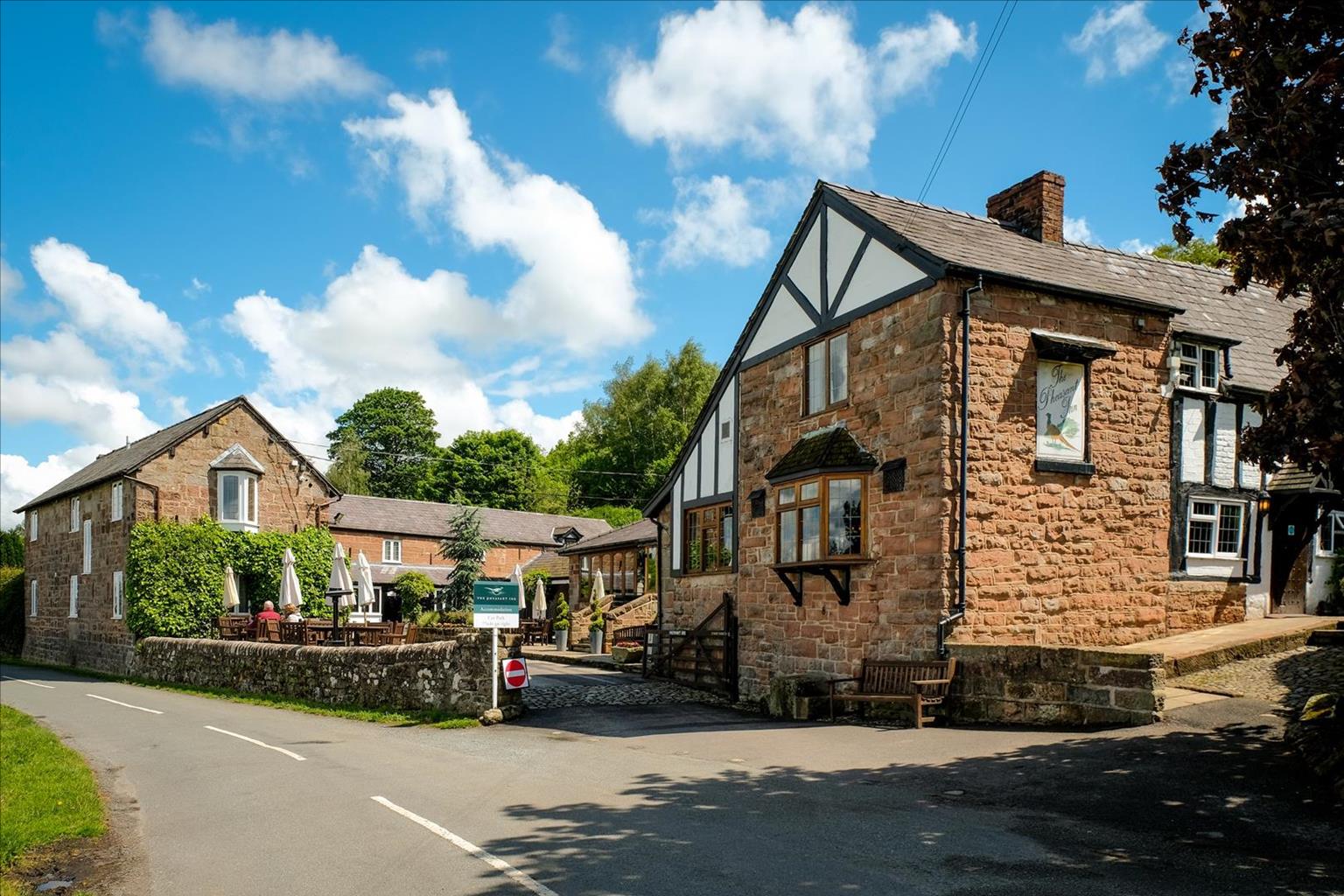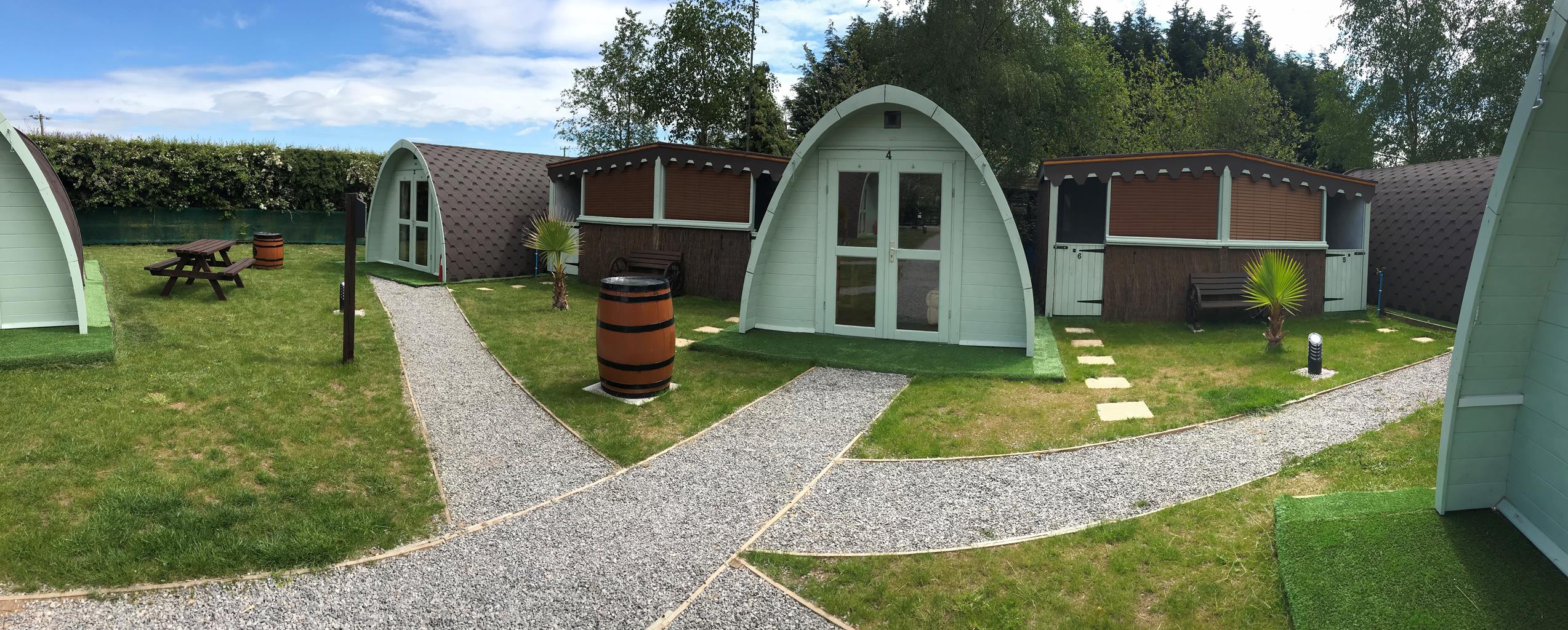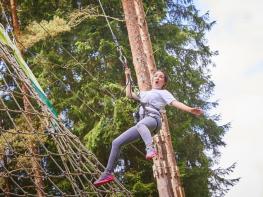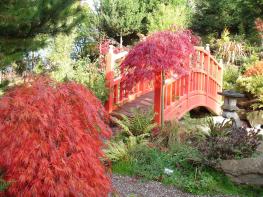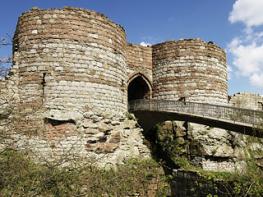Located within easy reach of many notable attractions and a short walk from The Fishpool Inn,…
Woods and heaths of Little Budworth

An easy walk centred around the distinctive heathland of Little Budworth Country Park.
3.25 miles (5.3kms)
About the walk
In the middle of all the rich green farmland of lowland Cheshire is an island of something different, a little piece of a rougher, older landscape. As ever, though, to call it 'wild' would be misleading. There is probably no such thing as a truly wild landscape anywhere in England. Usually it's peaceful, but a word of warning – it is very close to the Oulton Park motor racing circuit. On race days not only is the traffic abominable, there's no escaping the noise either.
Lowland heath
The area now called Little Budworth Country Park is a fragment of lowland heath. Britain has a substantial proportion of the world's lowland heath, but there is a lot less than there used to be – only 18 per cent of what was recorded in 1800. Most of what remains is in Southern England, so all in all, Little Budworth is a bit special.
Open landscape
The essence of heath is an open landscape, with a mix of heather, gorse, bracken and grasses and with only scattered, if any, trees. Gorse is unmistakable and in summer the popping of its seedpods makes it one of those rare plants you can recognise with your ears. There are two characteristic species of heather: ling (which gardeners may know as Calluna vulgaris) and bell heather (Erica cinerea). They often grow together and look quite similar, but ling has slightly paler and more open flowers.
Heathland typically developed from areas cleared of trees from neolithic times onward, as the poor soil made it unsuitable for permanent cultivation. The land was, however, still used for grazing. Gorse was traditionally used as fuel and for animal fodder, while bracken provided animal bedding and was also a valuable source of potash. These activities, and the occasional natural fire, prevented the heath reverting to woodland. Lack of grazing means that parts of today's country park have now become wooded, but you will also see areas of heath, including some which have recently been cleared.
The margins of Budworth Pool
The majority of the heathland at Little Budworth is dry, but there are some low-lying wetter areas. The pool you pass on the walk is a breeding ground for dragonflies and damselflies. By contrast the second half of the walk crosses farmland and then skirts the reedy margins of Budworth Pool. Many of Cheshire's meres were created by subsidence resulting from salt mining. Such relatively new lakes are also often called 'flashes'. Others, like this one were formed in hollows in the lumpy mantle of 'drift' left by retreating ice at the end of the last ice age.
Finally the walk visits Little Budworth village. It is peaceful and attractive but not so outrageously pretty that it has become a tourist magnet. You'll probably agree that this is to its benefit.
Walk directions
Cross the Coach Road to a path into woods opposite the car park entrance. Walk forward to a broader path and go right, bearing left at a fork just beyond. Ignoring side paths, keep ahead with the main trail, eventually reaching a cross-path and Heathland Trail marker near the edge of the wood. Follow it right, keeping near the woodland boundary.
Reaching a broad track from the fields, follow it right back to the Coach Road. Cross to Beech Road opposite, but leave after 100yds (91m) for a path off to the right. Beyond a fence gap, the way runs above a marshy hollow that is a haven for wildlife. In time the path drops into the valley to swing across a small dam holding back a pool at its foot.
Climb on to a fork by a trail marker. Bear left, then go left again at a cross-path just beyond to walk by the fringe of the wood. Later meeting a metalled track, go left past a house. The way then narrows, losing height to pass a tree and reed-fringed pool. Immediately turn off right beside a stream to meet a track.
Go over a stile opposite into wood and cut the corner left into a field. Strike diagonally right, climbing across the field to a stile in the distant far corner. A contained path runs beside a paddock, leading to another stile into a large field. Head out, passing left of the barns at Poolhead Farm to a gate in the far boundary. Emerging onto a lane, go left and then first right along a gently descending farm track that later narrows to a path. Gaps in the hedge give a view to the Budworth Pool and the church behind.
After 0.25 miles (400m), as it levels above the lake, look for a stile beneath an ash tree on the right. Head across a couple of paddocks to the water and turn left around the shore. Emerging onto a lane, turn right into Little Budworth.
At a junction at the top of the hill, swing right passing between St Mary's Church and the Red Lion. Leaving the village behind, follow the lane for 0.5 miles (800m) to reach the East Gate entrance of Oulton Park. There, bear off right on a path through the trees back to the car park.
Additional information
Easy tracks at first, field paths and some (usually quiet) road walking, many stiles
Mature woodland, open heath, farmland and mere
Can run free in country park and on fenced track
OS Explorer 267 Northwich & Delamere Forest
Main car park for Little Budworth Country Park
At start
WALKING IN SAFETY
Read our tips to look after yourself and the environment when following this walk.
Find out more
Also in the area
About the area
Discover Cheshire
Nestled between the Welsh hills and Derbyshire Peaks, the Cheshire plains make an ideal location to take things slow and mess around in boats. Cheshire has more than 200 miles (302 km) of man-made waterways, more than any other county in England. The Cheshire Ring is formed from the Rochdale, Ashton, Peak Forest, Macclesfield, Trent and Mersey and Bridgewater canals. This route takes you through a lot of Cheshire, and bits of other counties as well.
While exploring the county’s waterways, covering ground on foot or admiring the typical white plaster and black timber-frame houses, make sure to have a taste of Cheshire’s most famous produce. Although Cheddar has become Britain’s most popular cheese (accounting for over half of the cheese sales in the UK), it was once Cheshire cheese that was in every workman’s pocket back in the 18th century. Its moist, crumbly texture and slightly salty taste mean it goes well with fruit, peppers or tomatoes. As well as the usual white, there are also red and blue veined varieties.
Nearby stays
Restaurants and Pubs
Nearby experiences
Recommended things to do
Why choose Rated Trips?
Your trusted guide to rated places across the UK
The best coverage
Discover more than 15,000 professionally rated places to stay, eat and visit from across the UK and Ireland.
Quality assured
Choose a place to stay safe in the knowledge that it has been expertly assessed by trained assessors.
Plan your next trip
Search by location or the type of place you're visiting to find your next ideal holiday experience.
Travel inspiration
Read our articles, city guides and recommended things to do for inspiration. We're here to help you explore the UK.


